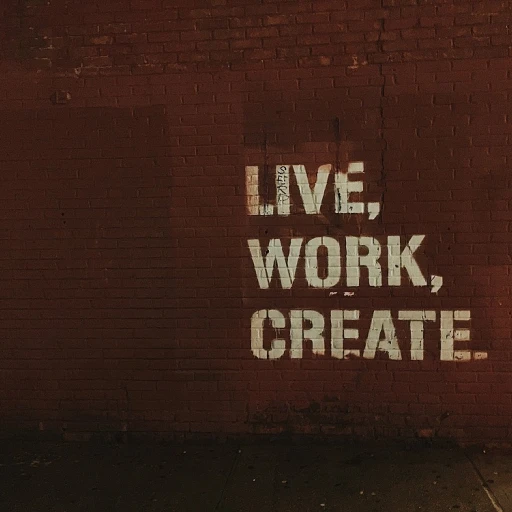
Understanding the Role of Employee Coaching Forms
The Vital Role of Forms in Employee Development
Understanding the role of employee coaching forms is crucial for cultivating an effective coaching culture within an organization. These forms are pivotal in structuring coaching sessions to optimize outcomes for both employees and management. By establishing a standardized template designed to capture essential details, these forms help streamline the coaching process, ensuring every session is productive and goal-oriented. Employee coaching forms serve as a foundation for setting clear and measurable goals, enhancing employee performance over time. Through these structured forms, human resources can efficiently manage coaching plans, track progress, and provide constructive feedback, thus reinforcing a continuous loop of growth. With a well-thought-out coaching plan template, organizations can effectively guide form employee interactions during sessions, focusing on skill enhancement and overall work improvement. Leveraging a coaching template allows for tracking multiple coaching sessions, ensuring consistency in documentation and feedback evaluation. By using these forms, human resources can craft effective employee goals that directly impact performance reviews. This approach not only enhances individual development but also aligns personal objectives with organizational aspirations. In the digital age, converting traditional forms to form online versions further optimizes the ease of access, enabling coaches to preview and tailor sessions anytime. This flexibility ensures that sessions remain relevant and adaptable to the evolving needs of employees, maximizing the benefit from every coaching session.Key Components of an Effective Coaching Form
Essential Elements to Include in a Coaching Form
Creating an effective coaching form requires thoughtful consideration of various elements that contribute to employee development and performance enhancement. A coaching form, or template, should be more than a checklist; it should serve as a structured mechanism to facilitate meaningful conversations between employees and managers.- Employee Information: Begin your coaching form by capturing essential employee info, such as names, job titles, departments, and dates. This ensures that each session is tailored to the individual’s role and responsibilities.
- Defined Goals: Incorporating a section for setting clear, measurable goals is crucial. This section guides the coaching session’s focus and helps align the employee’s objectives with the organization’s expectations. For more insights on effective goal setting, explore crafting effective employee goals.
- Performance Feedback: Including a dedicated space for feedback is vital. This allows managers to provide constructive feedback on areas of improvement and acknowledge accomplishments.
- Actionable Coaching Plan: Elements that map out a step-by-step coaching plan enable employees to understand the path forward. This helps in managing tasks more effectively and enhancing performance outcomes.
- Resources and Support: Outline the resources available to employees, such as training programs or tools that can aid their development. Integrating resources demonstrates organizational commitment to individual growth.
- Session Notes: Encourage detailed session notes to capture the essence of discussions. These notes can be referred back to in future coaching sessions, helping track progress over time.
- Follow-Up Plan: A follow-up section is imperative for ensuring that there is continuity and accountability in the coaching process. Scheduling future sessions reinforces the importance of regular performance reviews.
- Preview and Review: Finally, provide a section where both the coach and the employee can preview and review the completed form to ensure mutual understanding and agreement on the session’s outcomes.
Integrating Coaching Forms into HRIS
Seamlessly Integrate Coaching Forms into HRIS
Integrating coaching forms into a Human Resources Information System (HRIS) can significantly streamline the employee coaching process and improve overall efficiency. By utilizing digital platforms, organizations can conveniently manage coaching sessions, track employee performance, and optimize the use of resources. Here’s how you can effectively bring coaching forms into your HRIS.- Form Templates and Customization: Begin by creating a coaching form template within your HRIS. Templates designed for specific coaching purposes, such as one-on-one sessions or feedback forms, should be customizable to address distinct employee needs and goals. Tailor each form to align with your organization's objectives.
- Centralized Feedback Storage: By incorporating coaching forms into your HRIS, all feedback and session outcomes can be stored in a centralized location. This facilitates easy access to performance data and historical records, offering valuable insights for both employees and managers.
- Integration with Other HR Processes: Ensure that coaching forms are seamlessly integrated with other HR processes, such as performance evaluations and employee growth plans. This interconnectedness enhances the efficacy of your human resources strategies, allowing for a cohesive framework. For more about setting effective performance objectives, explore effective objectives for performance evaluations.
- Online Access: The convenience of accessing coaching forms online enables employees and managers to engage with the coaching process anytime and anywhere. An online platform also simplifies the form submission and review processes, ultimately saving time and boosting productivity.
- Automated Reminders and Updates: Utilize HRIS capabilities to automatically remind employees and managers about upcoming coaching sessions or deadlines for submitting feedback forms. This proactive approach helps keep everyone on track and enhances punctuality in the coaching process.
Benefits of Using Coaching Forms for Employee Development
Unlocking Potential Through Structured Feedback
One of the primary benefits of utilizing coaching forms in employee development is the structured feedback they provide. These forms serve as a template designed to capture essential insights into an employee's performance and skills. By consistently using a feedback form, managers can offer constructive criticism and praise, helping employees understand their strengths and areas for improvement.
Facilitating Goal Setting and Tracking
Coaching forms are instrumental in setting and tracking goals. They allow both the coach and the employee to outline clear objectives and monitor progress over time. This process not only aids in personal development but also aligns individual goals with organizational objectives, enhancing overall performance.
Enhancing Communication and Engagement
Regular coaching sessions facilitated by these forms encourage open communication between employees and management. This dialogue helps in identifying potential issues early and fosters a culture of transparency and trust. Employees feel more engaged and valued when they know their input is heard and acted upon.
Streamlining the Coaching Process
By integrating coaching forms into the human resources framework, organizations can streamline the coaching process. These forms act as a guide for each coaching session, ensuring that all necessary topics are covered and that the session remains focused and productive. This structured approach saves time and resources while maximizing the impact of each session.
Supporting Continuous Improvement
Finally, coaching forms support continuous improvement by providing a record of past sessions and outcomes. This historical data is invaluable for tracking long-term progress and making informed decisions about future development plans. It also helps in refining the coaching process itself, ensuring that it remains effective and relevant to the needs of the employees and the organization.
Challenges in Implementing Coaching Forms
Addressing Barriers to Implementation
Implementing coaching forms within an organization might seem straightforward, yet businesses often face several challenges. Recognizing these barriers and proactively addressing them can greatly enhance the effectiveness of the employee coaching strategy.- Resistance to Change: Change can be daunting for some employees. They might view coaching forms as an additional layer of bureaucracy or a means of micromanagement. To overcome this, human resources management can focus on clear communication of the benefits, ensuring employees understand that these forms are meant to help their growth and not hinder it.
- Lack of Time and Resources: Organizations may struggle with limited time and resources to effectively design and implement coaching sessions. To alleviate this, utilizing a coaching template and session plan can streamline the process, allocating time efficiently for feedback and goal-setting.
- Ineffective Design: If a coaching form template is poorly designed, it can impede the coaching process. Ensure that the form includes structured yet flexible sections to capture essential feedback and performance metrics.
- Integration with HR Systems: Sometimes, there is a technical challenge when integrating coaching forms into an existing human resources information system (HRIS). A well-crafted application plan is necessary to ensure these forms align seamlessly with online platforms, enhancing their accessibility and use.
- Insufficient Training: Employees and management alike require adequate training on how to effectively use coaching forms. Conduct training sessions to familiarize them with the form's purpose, its correct usage, and how it aligns with employee goals.
Best Practices for Maximizing the Impact of Coaching Forms
Best Steps for Amplifying Coaching Forms Impact
To unlock the potential of coaching forms and foster employee growth, it's crucial to adhere to a few best practices. These strategies will ensure that coaching forms become a powerful tool in improving employee performance and achieving organizational goals.
- Establish Clear Objectives: Strive to set clear objectives for each coaching form. Define what you aim to achieve in every coaching session, and communicate these goals with employees. This ensures that the coaching process is structured and directed toward measurable outcomes.
- Design User-Friendly Templates: A well-designed coaching form template can significantly enhance usability. Employees and managers should be able to easily fill out the forms without needing extensive help. Consider offering an online form option for more accessible interaction.
- Facilitate Two-Way Feedback: Encourage a culture of feedback that is constructive and reciprocal. An effective feedback form should facilitate communication between employees and coaches, promoting transparency and continuous improvement.
- Review and Update Regularly: Just like employment application forms, coaching forms should be reviewed and updated regularly to align with evolving organizational goals and employee needs. This continual refinement keeps the forms relevant and useful.
- Incorporate Technology: Utilize online platforms for managing coaching sessions and storing coaching form data. These resources can streamline the process, save time, and allow easy access to historical data.
By integrating these best practices into your human resources management system, organizations can ensure that coaching forms are a robust component of an effective employee development strategy, resulting in enhanced work skills and productivity.











